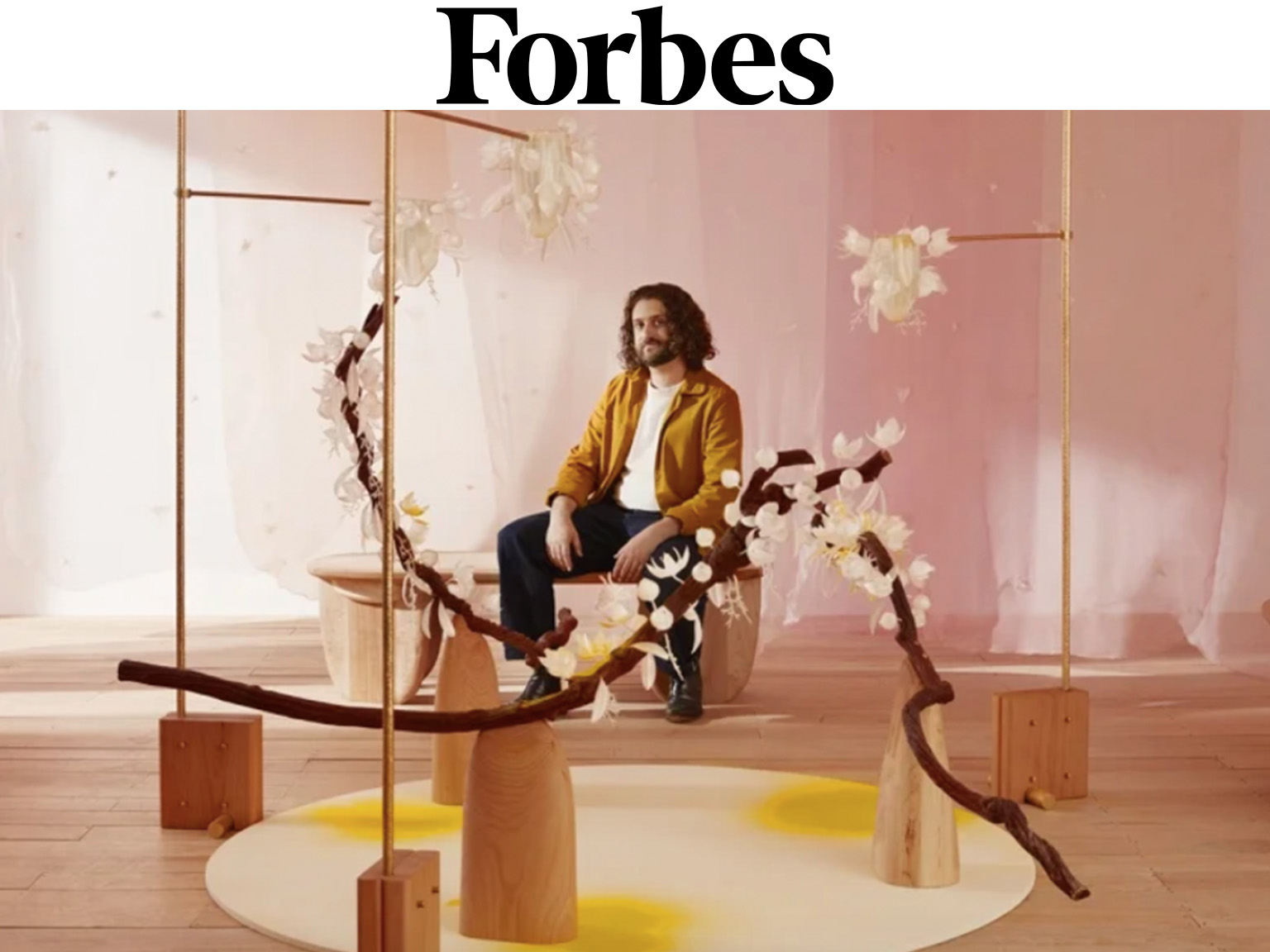By Grace Banks
In his last solo show at Friedman Benda gallery in New York “Ghosts of Our Towns”, Mexican designer Fernando LaPosse showed a spongy pink two seater sofa covered in thick fur. It was a fitting center piece for an artist who has spent the last ten years adding an equal sense of the sublime and the ridiculous to his exploration of the relationship between people and the natural world. “I work with a community of indigenous farmers and we have been working together to find ways to preserve their traditional farming” he says from his workshop in Tonahuixtla, located in the Acatlan region of Mexico.
Laposse has worked in Tonahuixtla for over 15 years, and is careful to make the distinction between being an artist that works in Mexico City, and an artist that works in rural Mexico. If you’re truly interested Mexico he says, “you want to go to the source and to learn from them [indigenous people] in a respectful way, you have to go to the countryside.” The designer maintains a deep relationship to the rural community he works with, attributing these communities as the source of Mexico’s popularity – “It has been their resilience to withstand modernization that has given us the cultural capital that the world is so obsessed with now.”
Since starting his practice, Laposse has looked at the impact of globalization, agriculture and global warming on local, micro communities. His latest work is an installation showing the pollination process in collaboration with Maison Perrier Jouet, which he debuted in Tokyo earlier this year in the Harajuku district at the House of Wonder, a pop-up hosted by Perrier Jouet from 11 – 29 October. Next week, he’ll show the piece at Design Miami. In the bubblegum pink, tactile work, Laposse aims to reimagine the pollination cycle with a trademark series of oddball add ons, like yellow pollination dust, running water, moss and 3D printed birds. Here, he explains how he tethers the need to subvert with bubblegum colors to his desire to critique the marginalization of agricultural communities.
What led you to create your latest installation The Pollination Dance?
The inspiration is pollination, the changing of the seasons and the passing of time. The collaboration is about celebrating the important role that pollinators play in ensuring biodiversity, but also to admire the beauty and mystery of the pollination act itself. It is a fleeting moment full of joy and vitality.
Your first debuted the piece at the House of Wonder, did Tokyo influence your work, as you put the final touches to the piece?
Japan was always an inspiration. Things like Japanese zen gardens for contemplation were very influential in creating the architecture of the art installation.
You work outside of Mexico City on a farm, how long have you had that space and how do you use it to influence your work?
I don´t own the farm but I work with a community of indigenous farmers outside of Mexico City and we have been working together to find ways to preserve their traditional farming within their ancestral lands by combining design, and the creation of new materials from the by-products of their crops. That collaboration has greatly influenced my work because they have taught me how everything in nature is interconnected and how with a proper knowledge of these interconnections we can strike a balance where plants, animals and humans work together to create abundance.
How does working in rural Mexico, and not Mexico City, show itself in your designs?
Mexico is a place that wherever you are you are very close to natural materials, it is easy to go to the source there and to find people to help you make your vision a reality without the need of big investment or machinery. Craft and proximity to nature is what makes Mexico so special.
Many people know of Mexico City as a creative place, but not so much the surrounding countryside. What’s a draw for you about rural Mexico that people don’t know?
Most of the things we associate with Mexican culture and gastronomy actually come from our indigenous population. It has been their resilience to withstand modernization that has given us the cultural capital that the world is so obsessed with now. Unfortunately they are still some of the most marginalized and unrecognized communities. If you want to go to the source and to learn from them in a respectful way, you have to go to the countryside.
You’ll be showing The Pollination Dance at Design Miami, how do you want audiences to interact with the work there?
Miami will be an even bigger and more ambitious version of the show in Japan, but with the same principles in mind. We are including poetry readings in the space related to pollination and I am very excited to see how people will react to that, and immerse themselves in the experience.










